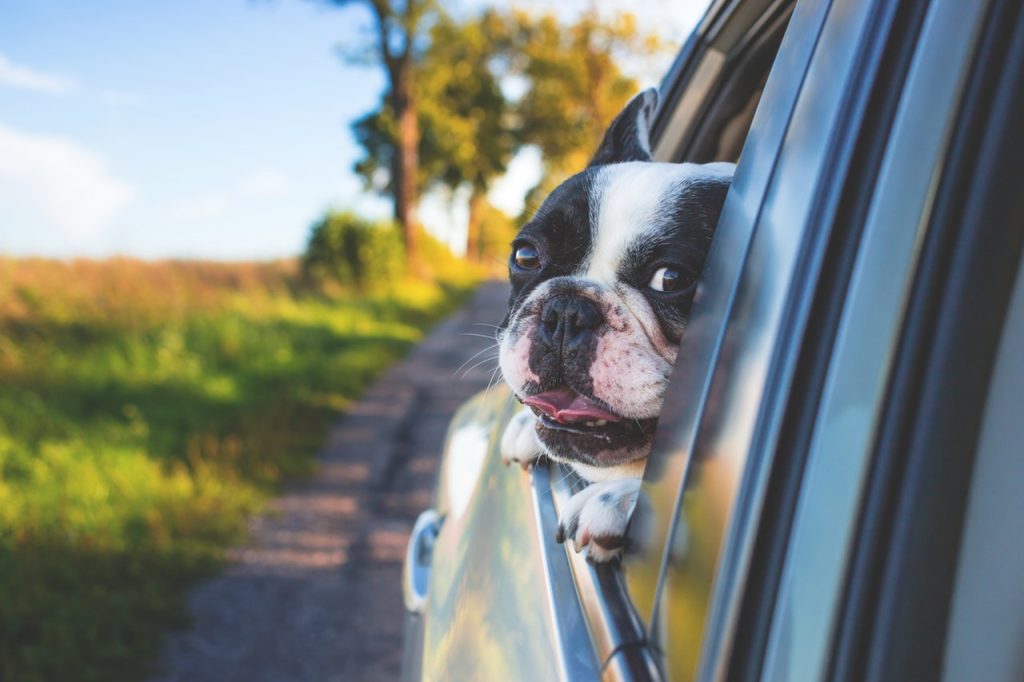The tragic news of a beloved pet dog dying on a flight in the USA has pet owners around the world worried about travelling with their furry friends. It is especially stressful for anyone considering an overseas move with their dog or cat. Obviously, no living thing should ever be put in the overhead luggage bin of an airplane. Flying with your dog or cat has some risks, and you can take steps to reduce those risks once you understand them. Due to the risks for safe travel for pets, it rarely makes sense to bring animals overseas for a holiday. Boarding with a trusted kennel or friend is a safer option, but if you are moving, bringing your pet makes sense – depending on the pet and some other circumstances.
If it is possible to drive to your destination with your pet, that is the safest option. You can’t just call Fido to the car and take off as if you were heading to the park. If you are driving a long distance with your dog and crossing borders, you will need a dog car seat belt to keep your dog safe and secure on the road. For small dogs and cats, a sturdy carrier with a door that fastens securely is essential.

What if you can’t drive? Then you can consider flying. Some dogs and cats are poor candidates for flying because of the shape of their heads. Breeds with ‘pushed in’ faces such as boxers, pugs, bulldogs, Pekingese, Persian cats, and some other exotic cat breeds face extra risks flying. Known as ‘brachycephalic’, these animals have issues with breathing that affect their ability to regulate their body temperature. They are at greater risk of suffocating or overheating, and they should never be put in the cargo hold. (Pets are not put in the same section as luggage; their area has better air pressure and climate control, although it is not as controlled as the passenger cabin.)
Reducing the Risks During Air Travel For Pets
One of the main threats to an animal in the cargo hold is temperature extremes. For that reason, it is important to avoid flying in winter or summer months. Spring and autumn are safest, but pay close attention to weather patterns locally, at your destination and along the route. Where possible, choose a direct route. This minimizes your pet’s time in transit as well as the risk of being lost if you have to change planes. If you do change planes, do not be afraid to (very nicely!) ask for confirmation that your pet is on board before the flight takes off.
Your pet’s carrier is extremely important. Make sure you have an airline-approved crate of the correct size. This is not the place to cut corners with so much at stake. Your pet should be able to stand up and turn around comfortably in the carrier. When in doubt, err on the side of bigger than necessary. Your pet’s airline carrier should have a secure water container, so your pet has access to drinking water throughout the journey. Bowls can tip and spill, so a water bottle is better.
Do not give your pet any kind of sedative before flying! This is crucial. Sedatives affect the animal’s ability to regulate their body temperature, and that can be fatal. If your pet is that anxious, you should probably reconsider flying him.
Check with an Expert Vet First
Before you travel, see your vet for advice about your specific animal’s needs. Obviously, you have to check about the required vaccines and pet travel passport and other documents. Do your research about the legal requirements for pet ownership in your destination and the health risks there. But also talk to your vet about your pet’s ability to fly safely. If your vet is unfamiliar with pet flight safety, you can bring copies of your pet’s health records to another vet who is. Vets in Dublin, Cork and Ennis are more likely to have experience as they are near airports, but vets anywhere who work with show dogs will also be familiar with the best options for safe travel for pets.





